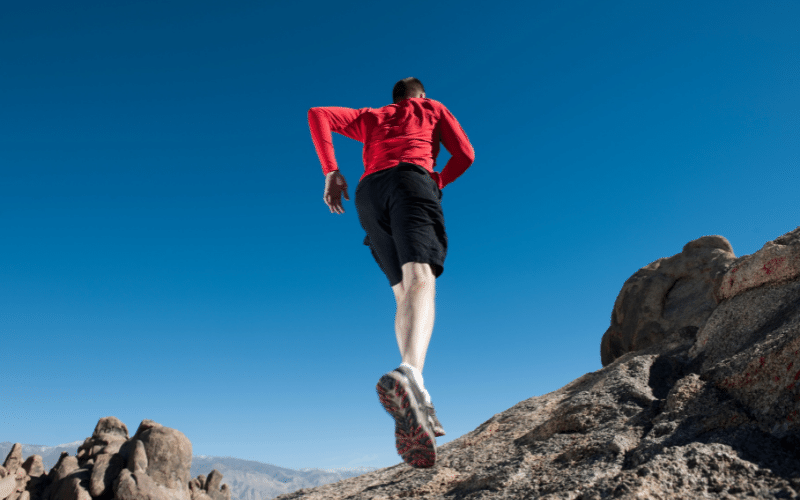Heat adaptation training is used to help an athlete adjust to competing in hot temperatures. For instance, athletes racing from colder areas need to adapt their bodies to sustain their anticipated level of performance in warm and humid surroundings. An athlete’s body will get used to controlling heat heat exhaustion if it is subjected to it on a constant schedule for a suitable length of time. For this reason, their time-trial potential will be improved in a hot environment, and their heart rates will drop while the duration of each activity will rise to a certain wattage.
Because of this, it could possibly be said that heat adaptation is like how the body adjusts to the stress of exercise. Due to this fact, heat adaptation can take place relatively quickly—in some circumstances, within a week, but with more confidence, within 10 to 14 days. In contrast, adaptations to endurance sports can take longer. Increases in blood plasma quantity and heart rate and decreases in core temperature occur first, followed by sweat reaction and cognitive improvements, which are “staggered.”
Athletes can use both active and passive heat adaptation strategies, such as practicing in a spa or taking a hot bath. The benefit of heat exposure while training is that it provides a higher thermal impulse, since exercise causes the core body temperature to rise more quickly than sitting still. It has also been stated that the approach to heat acclimatization should mirror the desired objective. This would indicate that heat exposure for the goal of adaptation is best done together with training for the endurance sport. However, adaptation regimens must also consider the athlete’s training intensity to promote optimal adaptations and minimize maladaptation. Let’s now learn more about heat adaptation in endurance sports.
Heat Adaptation in Endurance Sports
Heat adaptation, also known as heat acclimatization, pertains to the physiologic modifications that take place in reaction to frequent increases in skin and core body temperatures with endurance sports. Nonetheless, the degree of physiologic adaptations is based on the intensity, frequency, duration, and quantity of heat exposures. Over the period of 7 to 14 days, a person’s body adapts to heat stress by going through a sequence of heat adaptations. When training in the heat, these adaptations help the body manage heat stress. The process is known as “heat acclimation,” but it occurs in a more naturalistic way. In either scenario, the benefits of the adaptation include decreases in the following:
- Anxiety level
- Responses to changes in core body temperature
- Modifications in the core body temperature
- Concentrations of electrolytes in sweat.
In addition, the assessment of actual exertion rises:
- Sweating rate
- The beginning of sweat
- Blood circulation
- Athletes’ ability to compete in hot and cold weather
- An athlete’s ability to withstand heat stress during endurance sports.
It’s also worth noting that the amount to which heat adaptation occurs is determined by factors influencing these changes. It has been proven that adaptation in warm and dry surroundings differs from adaptation in warm and humid climates. Exercise frequency, intensity, and maintenance of a high inner body temperature during performing endurance sports are all known to affect adaptation.
How Can Core Body Sensors Help Check Heat Adaptation in Endurance Sports?
Core body temperature elevates with physical activity, which lowers your ability to execute. You can boost your performance by analyzing your core body temperature. Unfortunately, sportspeople have generally had limited access to precise monitoring of core body temperature. Ingested electronic pills and rectal thermometers are reliable, but they require invasive technology and a physician’s knowledge to deliver and collect data. As a result, compared to other endurance sports performance variables like heart rate variation and power output, there is extremely little research on the use of core body temperature for endurance sports.
Nevertheless, a wearable core body temperature sensor can provide sportspeople with significant data to help them practice and achieve their best performance. As a critical measure, the core body temperature is crucial field information. The performance declines as the core body temperature increase above a certain level. Cooling the body by circulating blood to the skin requires more energy; thus, the muscular power output decreases as the body heats up.
Despite the fact that the normal human body temperature is 36.9 degrees Celsius (98.4 degrees Fahrenheit), the temperature changes constantly throughout the day – it is termed the circadian rhythm. You can use a core body temperature sensor to assess an athlete’s overall health and well-being and to pinpoint and fine-tune the time duration during which you perform at your peak. To know more about how these sensors help check heat adaptation and more in endurance sports, check out the CORE Body Temp opinions.
To Conclude
It’s really nothing new to put endurance athletes under environmental stress in the hopes of increasing their performance. Still, athletes face a lot of logistical issues when competing on the international stage. They are subjected to substantial heat stress based on the climate data. Because of this, athletes generally have serious health and performance issues. Thus, there should be no doubt about the importance of heat-adaption technologies like core body temperature sensors.











